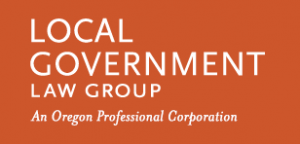The Budget Process in Four Simple Steps
by Mark Wolf
It is hard to believe that it is already the beginning of February and budget season is upon us! For many of you, you are already off and running. This article explains the budget process in four simple steps. It also serves as a reminder that ORS 192.670 requires governing bodies (to the extent reasonably possible) to make public meetings accessible by telephone, video, or other electronic means and to allow written testimony by email or other electronic means.
Budget Process in Four Simple Steps
If you have not already done so, the first step in the budget process is to appoint a budget officer. Typically, the budget officer is the chief executive officer (i.e., the fire chief or the city administrator), but your finance officer or even your attorney may function as the budget officer.
Step two is to review the composition of your Budget Committee. Your Budget Committee consists of the members of your governing body and an equal number of appointed electors. The appointed members of the Budget Committee may not be officers, agents, volunteers, or employees of your entity. If for some reason you cannot find enough electors for the Budget Committee, you may still move forward with the budget process. Just make sure that your minutes reflect the efforts you made to recruit citizen members.
Your third step is to make a copy of your proposed budget available for public review immediately after the budget officer releases it to the Budget Committee. Your budget officer must publish notice of the Budget Committee meeting, as well as a notice of the budget hearing held by your governing body.
Both the notice of your first Budget Committee meeting and the notice of your budget hearing can be published in one of four ways. The most common method of publication is to publish the notice in a newspaper of general circulation, at least 5 and not more than 30 days prior to the budget meeting or hearing. If you choose to publish in the paper, the notice of the Budget Committee meeting must be published twice. Notice of the budget hearing only needs to be published once. If your entity is located within Washington County, you must also send budget information to the County.
The notice of your budget hearing must include a summary of the budget approved by the Budget Committee. The Oregon Department of Revenue provides forms you can use to develop and publish your budget. You can find these forms by clicking on the following link and scrolling down to “Local budget”:
http://www.oregon.gov/DOR/forms/Pages/default.aspx.
The fourth step is to adopt the budget. Remember, your governing body has the ability to make changes to the Budget Committee’s recommended budget. New information introduced at the budget hearing should be carefully considered by the governing body prior to budget adoption. If a proposed change to the budget includes an increase in taxes, or more than a 10% increase in a fund, additional notice is required. Changes to the budget after adoption also generally require action by the governing body and sometimes require additional publications and public hearings. For this reason, all available information should be collected and considered during the budget process.
Your budget must be adopted on or before June 30.
Two Final Thoughts
First, it is very important that the Budget Committee approve any proposed taxes as part of its approval of the budget. If a tax election is scheduled for March or May (especially May), the Budget Committee should include the revenue from any anticipated additional tax authority in its approved budget. Act like the proposed tax election will pass and budget for it. If it fails, the governing body may reduce the budget. But if a Budget Committee fails to plan on the tax passing, you can run into timing issues as the governing body must publish a revised budget summary and hold a second hearing on the budget, which might prevent the tax from being certified prior to June 30.
Second, when thinking about your budget, consider which projects and purchases are planned for this upcoming year. Not only will this process assist you in projecting your entity’s expenditures and revenues, this level of planning will also allow you to provide the required notice to the Bureau of Labor and Industries (BOLI). State law requires that at least 30 days prior to budget adoption, your entity must submit to BOLI a “WH-118 form,” listing each public improvement your entity plans to fund in the upcoming budget period. For example, if you are planning to budget and use public funds to build a new fire station in the next year, you must file a form WH-118 with BOLI at least 30 days before your budget is adopted. Form WH-118 is available on BOLI’s website at:
http://www.oregon.gov/boli/WHD/PWR/docs/wh118.pdf.
As always, if you encounter any legal issues during your budget adoption cycle (or if you learn of information or receive additional revenue requiring a change in your adopted budget) please contact your legal counsel as early as possible. An ounce of prevention is worth a pound of cure. It is much more cost effective and efficient to consult with your legal counsel before a problem develops.
